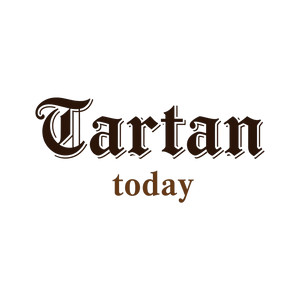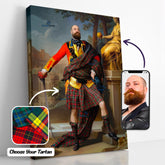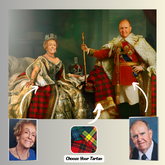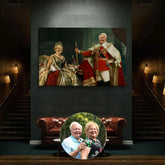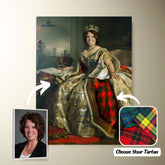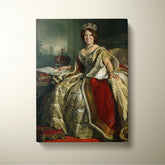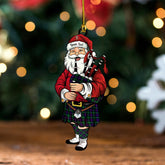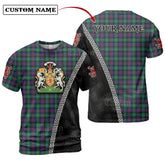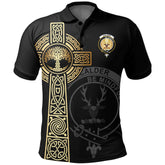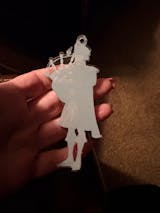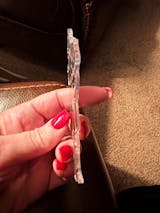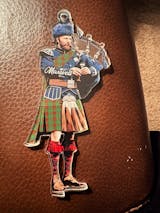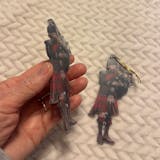-
Personalized Clan Calder Tartan Bagpipe Ornament with Custom Name – Scottish Christmas Tree Decoration ZN40
Personalized Clan Calder Tartan Bagpipe Ornament with Custom Name – Scottish Christmas Tree Decoration ZN40Celebrate your Scottish heritage with this unique wood & acrylic tartan ornament. Perfect as a personalized Christmas decoration or a meaningful gift for friends and relatives on special occasions such...- From $19.99 USD
$25.99 USD- From $19.99 USD
- Unit price
- per
Save $6.00 -
Personalized Clan Calder Tartan Drummer Ornament with Custom Name – Scottish Christmas Tree Decoration SL34
Personalized Clan Calder Tartan Drummer Ornament with Custom Name – Scottish Christmas Tree Decoration SL34Celebrate your Scottish heritage with this unique wood & acrylic tartan ornament. Perfect as a personalized Christmas decoration or a meaningful gift for friends and relatives on special occasions such...- From $19.99 USD
$25.99 USD- From $19.99 USD
- Unit price
- per
Save $6.00 -
Personalized Clan Calder Tartan Bagpipe Ornament with Custom Name – Scottish Christmas Tree Decoration LL42
Personalized Clan Calder Tartan Bagpipe Ornament with Custom Name – Scottish Christmas Tree Decoration LL42Celebrate your Scottish heritage with this unique wood & acrylic tartan ornament. Perfect as a personalized Christmas decoration or a meaningful gift for friends and relatives on special occasions such...- From $19.99 USD
$25.99 USD- From $19.99 USD
- Unit price
- per
Save $6.00 -
Clan Calder Tartan Crest Keychain GD53 - Calder Tartan Clan
Calder Tartan Clan Crest Keychain GD53 Product detail: This personalized keychain for pictures are the perfect choice for a fun gift idea, the choice is yours to come up with a surprise for someone you love. The keychain is made of PMMA, environmentally, friendly,...- From $15.25 USD
- From $15.25 USD
- Unit price
- per
-
Calder Tartan Clan
-
Personalized Clan Calder Clan Crest Tartan Santa Ornament – Custom Acrylic Christmas Decoration XK35 - Calder
Personalized Clan Calder Clan Badge Tartan Ornament – Custom Acrylic Christmas Decoration XK35Celebrate your Scottish heritage with this unique wood & acrylic tartan ornament. Perfect as a personalized Christmas decoration or a meaningful gift for friends and relatives on special occasions such as Christmas,...- From $19.99 USD
- From $19.99 USD
- Unit price
- per
-
Calder
-
Custom Name Clan Calder Tartan Garden Flag with Clan Crest and the Golden Sword of Courageous Legacy IH61 - Calder
Custom Name Clan Calder Tartan Garden Flag with Clan Crest and the Golden Sword of Courageous Legacy IH61 Immerse your space in the rich heritage of Scotland with our Tartan Garden Flags, exclusively from Tartan Today. Featuring vibrant tartan and Scottish heritage designs, these garden...- From $34.45 USD
- From $34.45 USD
- Unit price
- per
-
Calder
-
Clan Calder Tartan Scotland Map Canvas “Tartan Runs Through My Veins” Wall Art FH71
Clan Calder Tartan Scotland Map Canvas “Tartan Runs Through My Veins” Wall Art FH71Celebrate your Scottish heritage with this striking canvas print featuring the map of Scotland filled with Calder tartan, paired with the bold phrase: “Tartan Runs Through My Veins.” Whether you're honoring...- From $35.05 USD
- From $35.05 USD
- Unit price
- per
-
Personalized Clan Calder Tartan Shirt with Scotland Coat of Arms & Custom Name UW74 - Calder
Calder Tartan Shirt with Scotland Coat of Arms & Custom Name UW74Celebrate your Scottish heritage with this Calder Tartan Shirt with Scotland Coat of Arms & Custom Name UW74, featuring a bold Scotland Coat of Arms and your custom name on the back. Made...- From $39.54 USD
- From $39.54 USD
- Unit price
- per
-
Calder
-
Clan Calder Tartan Custom Face Hawaiian Shirt – Unisex Gift for Family Members, Summer Party GN40 - Calder Tartan
Clan Calder Tartan Custom Face Hawaiian Shirt – Unisex Gift for Family Members, Summer Party GN40?? Stand out with our custom face Hawaiian shirt featuring your chosen tartan pattern and up to 10 faces printed for free! Whether it's your own, your pet's, or...- $42.25 USD
$59.99 USD- $42.25 USD
- Unit price
- per
Save $17.74-
Calder Tartan
-
Clan Calder Tartan Flat Cap JP97 - Clan Calder Tartan
Clan Calder Tartan Flat Cap JP97Elevate Your Heritage: The Authentic Tartan Jeff Cap Step into a legacy of timeless style and comfort with our Authentic Tartan Flat Cap. Crafted for the discerning American who cherishes their Scottish roots and appreciates classic elegance, this isn’t just...- From $33.85 USD
$45.59 USD- From $33.85 USD
- Unit price
- per
Save $11.74-
Clan Calder Tartan
-
Clan Calder Modern Tartan Polo Shirt Viking Wolf WA66 - Calder Modern Tartan
Clan Calder Modern Tartan Polo Shirt Viking Wolf WA66 Description: Crafted in 100% polyester with your own design which combines comfort and vogue. This shirt has some'great features, it has 3 buttons, elastic collar and cuffs. 12.35 Oz. Made from polyester fabric. 3 buttons,...- $38.25 USD
- $38.25 USD
- Unit price
- per
-
Calder Modern Tartan
-
Clan Calder Modern Tartan Polo Shirt Half of Me - Cross Style ZQ83 - Calder Modern Tartan
Clan Calder Modern Tartan Polo Shirt Half of Me - Cross Style ZQ83 Description: Crafted in 100% polyester with your own design which combines comfort and vogue. This shirt has some'great features, it has 3 buttons, elastic collar and cuffs. 12.35 Oz. Made from...- $38.25 USD
- $38.25 USD
- Unit price
- per
-
Calder Modern Tartan
-
Clan Calder Modern Tartan Polo Shirt - Royal Coat Of Arms Style YB33 - Calder Modern Tartan
Clan Calder Modern Tartan Polo Shirt - Royal Coat Of Arms Style YB33 Description: Crafted in 100% polyester with your own design which combines comfort and vogue. This shirt has some'great features, it has 3 buttons, elastic collar and cuffs. 12.35 Oz. Made from...- $38.25 USD
- $38.25 USD
- Unit price
- per
-
Calder Modern Tartan
-
Clan Calder Modern Tartan Polo Shirt - Lion Rampant And Celtic Thistle Style SS32 - Calder Modern Tartan
Clan Calder Modern Tartan Polo Shirt - Lion Rampant And Celtic Thistle Style SS32 Description: Crafted in 100% polyester with your own design which combines comfort and vogue. This shirt has some'great features, it has 3 buttons, elastic collar and cuffs. 12.35 Oz. Made...- $38.25 USD
- $38.25 USD
- Unit price
- per
-
Calder Modern Tartan
-
Clan Calder Modern Tartan Polo Shirt - Believe In Me Style FF78 - Calder Modern Tartan
Clan Calder Modern Tartan Polo Shirt - Believe In Me Style FF78 Description: Crafted in 100% polyester with your own design which combines comfort and vogue. This shirt has some'great features, it has 3 buttons, elastic collar and cuffs. 12.35 Oz. Made from polyester...- $38.25 USD
- $38.25 USD
- Unit price
- per
-
Calder Modern Tartan
-
Clan Calder Modern Tartan Polo Shirt - Alba Celtic Style XL35 - Calder Modern Tartan
Clan Calder Modern Tartan Polo Shirt - Alba Celtic Style XL35 Description: Crafted in 100% polyester with your own design which combines comfort and vogue. This shirt has some'great features, it has 3 buttons, elastic collar and cuffs. 12.35 Oz. Made from polyester fabric....- $38.25 USD
- $38.25 USD
- Unit price
- per
-
Calder Modern Tartan
-
Clan Calder Modern Tartan Polo Shirt KP56 - Calder Modern Tartan
Clan Calder Modern Tartan Polo Shirt KP56 Description: Crafted in 100% polyester with your own design which combines comfort and vogue. This shirt has some'great features, it has 3 buttons, elastic collar and cuffs. 12.35 Oz. Made from polyester fabric. 3 buttons, elastic collar...- $38.25 USD
- $38.25 USD
- Unit price
- per
-
Calder Modern Tartan
-
Clan Calder Modern Clan - Military Polo Shirt RE11 - Calder Modern Tartan
Clan Calder Modern Clan - Military Polo Shirt RE11 Description: Crafted in 100% polyester with your own design which combines comfort and vogue. This shirt has some'great features, it has 3 buttons, elastic collar and cuffs. 12.35 Oz. Made from polyester fabric. 3 buttons,...- $38.25 USD
- $38.25 USD
- Unit price
- per
-
Calder Modern Tartan
-
Clan Calder Clan Unisex Polo Shirt - Celtic Tree Of Life DK45 - Calder Tartan
Clan Calder Clan Unisex Polo Shirt - Celtic Tree Of Life DK45 Description: Crafted in 100% polyester with your own design which combines comfort and vogue. This shirt has some'great features, it has 3 buttons, elastic collar and cuffs. 12.35 Oz. Made from polyester...- $38.25 USD
- $38.25 USD
- Unit price
- per
-
Calder Tartan
-
Clan Calder Clan Polo Shirt Viking Wolf KF45 - Calder
Clan Calder Clan Polo Shirt Viking Wolf KF45 Description: Crafted in 100% polyester with your own design which combines comfort and vogue. This shirt has some'great features, it has 3 buttons, elastic collar and cuffs. 12.35 Oz. Made from polyester fabric. 3 buttons, elastic...- $38.25 USD
- $38.25 USD
- Unit price
- per
-
Calder
Ex: Your Tartan + Product
Popular Products
Turn Me Royal Personalized Portrait from Your Photo, Custom Tartan. Custom Canvas Wall Art as Gift for Men
- From $32.45 USD
- From $32.45 USD
- Unit price
- / per
Royalty Couple Personalized Portrait from Your Photo, Custom Tartan. Custom Canvas Wall Art
- From $47.45 USD
- From $47.45 USD
- Unit price
- / per
The Queen Personalized Portrait from Your Photo, Custom Tartan. Custom Canvas Wall Art as Gift for Women
- From $32.45 USD
- From $32.45 USD
- Unit price
- / per
Which Clan Are You From?
List Of Tartan
-
Clan A
- Abercrombie Tartan
- Aberdeen Tartan
- Abernethy Tartan
- Adair Tartan
- Adam Tartan
- Ayrshire Tartan
- Agnew Tartan
- Aikenhead Tartan
- Ainslie Tartan
- Aiton Tartan
- Allan Tartan
- Alexander Tartan
- Allardice Tartan
- Allison Tartan
- Anderson Tartan
- Angus Tartan
- Anstruther Tartan
- Arbuthnot Tartan
- Armstrong Tartan
- Arnott Tartan
- Auchinleck Tartan
- Ayrshire Tartan
-
Clan B
- Baillie Tartan
- Bain Tartan
- Baird Tartan
- Balfour Tartan
- Bannatyne Tartan
- Bannerman Tartan
- Barclay Tartan
- Baxter Tartan
- Beaton Tartan
- Bell Tartan
- Belshes Tartan
- Bethune Tartan
- Beveridge Tartan
- Binning Tartan
- Bisset Tartan
- Blackadder Tartan
- Blackstock Tartan
- Black Watch Tartan
- Blair Tartan
- Blane Tartan
- Blyth Tartan
- Borthwick Tartan
- Boswell Tartan
- Bowie Tartan
- Boyd Tartan
- Boyle Tartan
- Brisbane Tartan
- Brodie Tartan
- Brown/ Broun Tartan
- Bruce Tartan
- Buccleuch Tartan
- Buchan Tartan
- Buchanan Tartan
- Burnett Tartan
- Burns Tartan
- Butter Tartan
- Byres Tartan
-
Clan C
- Cairns Tartan
- Calder Tartan
- Callander Tartan
- Cameron Tartan
- Campbell Tartan
- Campbell of Breadalbane Tartan
- Campbell of Cawdor Tartan
- Carmichael Tartan
- Carnegie Tartan
- Carruthers Tartan
- Cathcart Tartan
- Chalmers Tartan
- Charteris Tartan
- Chattan Tartan
- Cheyne Tartan
- Chisholm Tartan
- Christie Tartan
- Clark Tartan
- Clelland Tartan
- Clephan Tartan
- Clergy Tartan
- Cochrane Tartan
- Cockburn Tartan
- Colquhoun Tartan
- Colville Tartan
- Cooper Tartan
- Couper Tartan
- Craig Tartan
- Cranstoun Tartan
- Crawford Tartan
- Crichton Tartan
- Crief District Tartan
- Crosbie Tartan
- Cumming Tartan
- Cunningham Tartan
- Currie Tartan
- Clan D
- Clan E
- Clan F
- Clan G
- Clan H
- Clan I
- Clan J
- Clan K
- Clan L
-
Clan M
- Maitland Tartan
- Malcolm Tartan
- Mar Tartan
- Marjoribanks Tartan
- Maxtone Tartan
- Matheson Tartan
- Maule Tartan
- Maxwell Tartan
- Meldrum Tartan
- Melville Tartan
- Menzies Tartan
- Mercer Tartan
- Middleton Tartan
- Moffat Tartan
- Moncrieffe Tartan
- Montgomery Tartan
- Monypenny Tartan
- Moncreiffe Tartan
- Monteith Tartan
- Morrison Tartan
- Mouat Tartan
- Moubray Tartan
- Mow Tartan
- Muir_More Tartan
- Muirhead Tartan
- Munro Tartan
- Murray Tartan
- Murray of Atholl Tartan
-
Clan Mc/Mac
- MacAlister Tartan
- MacArthur Tartan
- MacAlpine Tartan
- MacAulay Tartan
- MacBain Tartan
- MacBean Tartan
- MacBeth Tartan
- MacCallum Tartan
- MacCraig Tartan
- MacColl Tartan
- MacCorquodale Tartan
- MacDiarmid Tartan
- MacDonald Tartan
- MacDonald of Clanranald Tartan
- MacDonald of Sleat Tartan
- MacDonnell of Glengarry Tartan
- MacDonnell of Keppoch Tartan
- MacDougall Tartan
- MacDowall Tartan
- MacDuff Tartan
- MacEwen_MacEwan Tartan
- MacEdward Tartan
- MacFarlane Tartan
- MacGill Tartan
- MacGillivray Tartan
- MacGregor Tartan
- MacGowan (McGowan) Tartan
- MacHardy Tartan
- MacIan Tartan
- MacInnes Tartan
- MacIntyre Tartan
- MacKay Tartan
- MacKillop Tartan
- MacKellar Tartan
- Mackinlay Tartan
- MacKenzie Tartan
- Mackie Tartan
- MacKinnon Tartan
- MacKintosh / MacIntosh Tartan
- MacLeod Tartan
- MacMillan Tartan
- MacNab Tartan
- MacNaughton Tartan
- MacNeil / MacNeill Tartan
- MacNeil of Colonsay Tartan
- MacNicol Tartan
- MacPhail Tartan
- MacPhee_MacFie Tartan
- MacPherson Tartan
- MacQuarrie Tartan
- MacQueen Tartan
- MacRae Tartan
- MacRow Tartan
- MacSporran Tartan
- MacTaggart Tartan
- MacTavish Tartan
- MacThomas Tartan
- McCorquodale Tartan
- McCulloch Tartan
- McFadzen Tartan
- McGeachie Tartan
- McIver Tartan
- McKerrell Tartan
- Clan N
- Clan O
- Clan P
- Clan R
-
Clan S
- Sandilands Tartan
- Scott Tartan
- Scrymgeour Tartan
- Selkirk Tartan
- Sempill Tartan
- Seton Tartan
- Shaw Tartan
- Shepherd Tartan
- Sinclair Tartan
- Skene Tartan
- Skirving Tartan
- Smith Tartan
- Somerville Tartan
- Spalding Tartan
- Spens Tartan
- Spottiswood Tartan
- Stevenson Tartan
- Stewart Tartan
- Stewart of Appin Tartan
- Stirling Tartan
- Strachan Tartan
- Straiton Tartan
- Strange Tartan
- Strathclyde District Tartan
- Stuart of Bute Tartan
- Sutherland Tartan
- Swinton Tartan
- Clan T
- Clan U W Y
- Request Your Clan
Clan Calder (Calder Tartan)
1. About Clan Calder (Calder Tartan)
2. Clan Calder History (Calder Tartan)
According to historian William Anderson, the French knight Hugh de Cadella, who was appointed Thane of Calder and afterwards known as Cawdor, is how the name first gained notoriety in Scotland.
Inverness, where the Calders were prominent nobles with considerable domains beginning in the fourteenth century, is where the name originated.
Between 1178 and 1198, Hugh de Kaledouer was present when William the Lion granted a charter at Montrose and gave Willelmus de Haia a toft in Forfar.
He attested a charter by Swan filius Thori during the same reign and gave the Abbey of Scone forty acres in Buthyrgasc.
William Meignes sold Donald of Calder, lord of that ilk, the other half of Dunmaglas in 1419.
In 1461, Farchardus de Caldor served as prebendarius de Crechmont, and in 1589, John Calder served as Bute Persuivant.
The Calders of Asswanly were granted a baronetcy in Nova Scotia in 1686.
3. Clan Calder Tartans
Clan Calder may don the Campbell tartan because they are related to the Cawdor Campbell family.
Campbell of Cawdor Modern
Campbell of Cawdor Ancient
4. Clan Calder Crest & Coats of Arms
4.1 Clan Calder Crest
Worn by all of the name and ancestry
Crest Description:
A hart’s head cabossed, Sable, attired Gules
4.2 Clan Calder Coat of Arms
Note on Coats of Arms: A coat of arms is given to an individual under Scottish heraldic law (with the exception of civic or corporate arms). A 'family coat of arms' does not exist.
With the exclusions listed above, the weapons depicted below are personal weapons. The only person authorized to use these weapons is the grantee.
Calder of Calder
THE CAWDOR COAT OF ARMS.
The Calder, Campbell, Lorne, and Lort ancestors are represented by the four quarters of the coat of arms (the shield in the center), clockwise from left. Mottos: Candidus cantabit moriens ('The pure heart shall sing when dying') over the crest; 'Be careful' under the arms. Barony (GB) was founded on June 21st, 1796. 5 October 1827, Earl and Viscount (UK).
5. Clan Calder Places & People
5.1 Clan Calder Places
The oldest known mention of Cawdor Castle, which is close to Nairn, dates to 1454, when William Calder, the 6th Thane of Cawdor, received a "licence to fortify."
This is the earliest known date for the castle. The fortification may include some components that date back to the late 1300s, according to the research.
When Muriel Calder, an heir to the Calder estate, wed Sir John Campbell in 1510, the castle was transferred to the Campbell family via marriage. It is still owned by the Campbell family today.
6. Associated Names
Spelling variants include: Calder, Cadder, Caddell, Cawdor, Cauder, Caldell, Caldille, Cattel and many more. Calder is seen as a sept of the large and powerful Clan Campbell.
- Choosing a selection results in a full page refresh.
